Pellegrini; floating islands, crocs and big rats!
Tuesday, December 08, 2009
 Colonia Carlos Pellegrini, Litoral, Argentina
Colonia Carlos Pellegrini, Litoral, Argentina
Whilst in Mercedes, we had been helped enormously by Graciella, who has something to do with the hostel we stayed in. Graciella is the antithesis of all thing Sudamerikano, as she actually gets things done. Having met us like a whirlwind at the bus terminal on our arrival, she gave us good information and flattered us about the quality of our Spanish. We had already planned to move on to Colonia Carlos Pellegrini and she showed us several alternative stopping places and made suggestions about how to see the National Park. We ended up using her services to book a couple of days of accommodation and activities; it was probably more expensive than doing it all ourselves but it was nice to be able to leave it all to someone else for a change!
From Mercedes to Pelligrini the land is still incredibly flat, the road is still incredibly straight. The difference is that there is no tarmac. Ruta 40 is a sandy, dusty, and in some places muddy, road. The method of transport is the daily bus, declaring itself 'Tourismo Ibera' on the side. In reality we were the only tourists on the bus. Other than us, the bus was full of people from Pelligrini and its surrounding area who seem to make this 120km, 3 ½ hour journey to buy provisions. The small luggage hold of the bus was packed full to the ceiling with everything from groceries to bags of cement.
Pellegrini is the gateway to Esteros de Ibera, a huge area of about 600 lakes connected by marshland, channels and waterways, which has been a national park for about 25 years. There are no rivers or springs feeding into the area, the water all comes from rainfall and feeds into the River Parana, the biggest river in Argentine (although we are far from sure how this is determined). Now that such a great area is being left unmolested, the wildlife is beginning to thrive after many years of being under threat from local hunting etc. The water is very shallow throughout the area and vegetation builds up to form huge floating islands that are home to several interesting animals as well as a huge range of birds.
However, don't let that make you think that the town is some sort of Bakewell 'honeypot’. There are about 600 residents (about half of whom are children) spread out over a wide area. There are no surfaced roads leading to the town and certainly none in it! Although a map seems to show a similar grid system of roads to most Argentine towns, the blocks have nothing but fields and a few scattered dwellings within them. There is no supermarket, no corner shop, not even a kiosk, as far as we could make out. There were a couple of ‘artesan’ shops selling crafts, but we didn’t venture in for fear of raising their hopes that we might actually buy something. There is a school which operates as a primary school by day and secondary school by night, a very new looking hospital/health centre, a police station (which we guess is not all that over run with business here), a museum (closed when we visited) and a church. We walked around this very quiet and tranquil area marvelling at the range of birds that we had not seen before in Argentine. We also spotted a quite large and lovely snake enjoying the sunshine but sadly, it didn’t want its photo taken and quickly slid off into the undergrowth.
Our first trip was by boat around the lagoon areas, stopping frequently to spot different creatures and we were quickly able to see capybaras. These look a bit like giant guinea pigs and are actually large rodents; ‘the world’s biggest rats’ proclaimed our guide Rodrigo. They live all their lives in water and have strangely but usefully developed webbed feet for swimming. We first saw them out of the water but they quickly assumed their normal position; almost completely submerged and voraciously chewing grass. (Their name comes from the native name which means ‘shiny head in the water‘ if our guide is to be believed). As we got closer it was clear that they were really not particularly concerned by us in a nearby boat. Rodrigo explained that in the early days of the park all the animals had been very wary of humans but now they recognise that approaching boats are not a danger. It was great to be within touching distance of these strange creatures and for them to be carrying on their normal lives untroubled.
The truth about the animals’ lack of fear was quickly confirmed as we drew alongside three caimans up to a couple of metres long basking in the sunshine. These relatives of the crocodile were quite happy to have us right alongside them and showed no signs of fear or upset. We were almost tempted to stretch out our arms and pet them, they looked so docile (although their teeth still look a bit sharp). Although the caimans here grow up to three metres long, it is only the younger ones (up to about 15 years and a couple of metres) that are unafraid of people. The older ones no doubt still have memories of the hunting that went on before (the skins were particularly prized for shoe making). Their days are mostly spent sunbathing but by nights they are more active as they seek out some tasty morsels.
We saw many different birds in the area, which attracts lots of migrants. One sort is the Southern Screamer which is supposed to be very noisy. They live in families on the floating islands and the young hang around with the parents for almost a year before they go off to make their own family groups. The family group we encountered were obviously not living up to their name as they uttered not a sound. Paradoxically, two other small birds were kicking up a terrific row, jumping in the air and shouting out so we asked Rodri what they were called. His reply, ‘Water Chicken’ somehow did not seem wholly convincing! Later we actually heard a screamer scream but it wasn’t quite as overwhelming as we had been led to believe. The air over the area has many birds of prey circling round and we saw kites and vultures making successful strikes on smaller animals and some futile attempts by smaller birds to keep the big’uns away. Nature, red in tooth and claw!
One significant advantage of the full board service that we have bought into is that we were able to insist on veggie food. So tonight we had a proper vegetarian dinner without resorting to some variation on pizza. We may even have got close to our five a day! After dinner we went back to our room but had not really settled down when the power went completely. All was so completely pitch black that we could literally not see a thing. We inched our way into the courtyard outside our room and there was no inkling of light in any direction except the blaze a stars in the sky. Even the dark skies we had seen in places like Cape Tribulation could not match this sky. We spent a while just looking up, realising that although there clearly were shooting stars, some of the moving stars were actually fireflies dancing in the trees. All around us was absolutely quiet (except of course for the dogs, frogs, crickets etc).
The following day we undertook a bit of light trekking around the area with David, cousin to Rodri and son of the mythical Hugo who is supposed to arrive a some point and finalise our arrangements for leaving. We were supposed to begin with a viewing of a film in the visitors’ centre but this was not possible as, guess what, the electricity in the town had failed again. David resignedly explained that this happened a lot (we already sensed this). So we set straight off for our ‘nature walk’. We entered a very dense area of forest and fought our way through the even denser clouds of mosquitoes to find some of the local howler monkeys. We did see some of them, high up in the trees and one did a little bit of gymnastics for us as well. However, what they did not do was howl. Taking their cue from yesterday’s Southern Screamers, they were staying resolutely dumb. As we made our way over walkways and down trails we came across lots of capybaras and more caimans. We spotted a few marsh deer, some extremely close but these are still quite timid and didn’t hang around long. Neither did the iguanas that we occasionally saw as they dashed very quickly off into the denser forest. On our return to the visitors’ centre, the electricity had been restored so we were now able to watch the film about the ecosystems and how the national park status is helping to bring the area back into balance. On today’s showing tourism is not likely to destroy anything; the only other tourists we saw were the same ones we had seen in a boat yesterday, suggesting that the sum total of tourists for the two days is six.
Our final afternoon we spent taking another excellent excursion by boat with Rodri. This time we passed under the very low bridge that carries the ‘main road’ into Pellegrini and explored the wider lagoon area. We have been a bit spoiled for inland waterways since we travelled up Tonle Sap in Cambodia, a waterway so wide that even from the top of the boat you can’t see the shores on either side. However, it was still an impressive bit of water and, as we saw yesterday, was full of interesting wildlife. We were pleased to see another Marsh Tyrant, a whiteheaded bird that travels around the marshes by sitting on the backs of animals such as deer and capybaras (but not, we imagine, caiman). We had a relatively early night - for tomorrow we are making a journey of many parts to get to San Ignacio to visit the ruins of the Jesuit Missions.
Other Entries

 Colonia Carlos Pellegrini, Litoral, Argentina
Colonia Carlos Pellegrini, Litoral, Argentina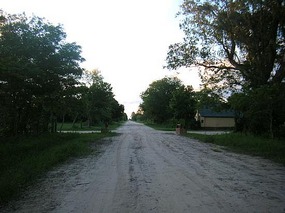
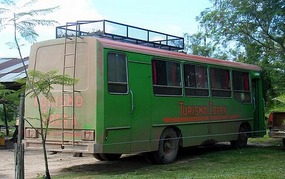
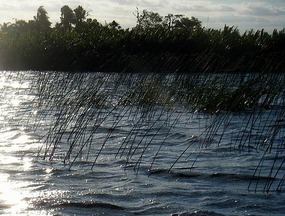
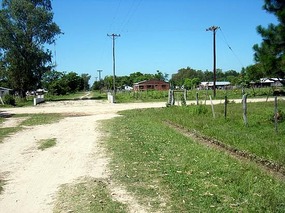
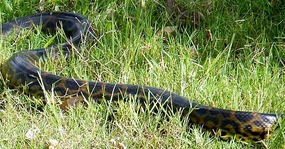
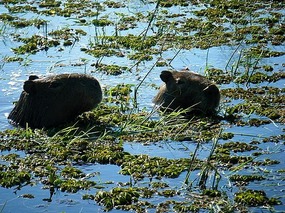
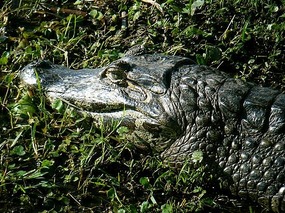

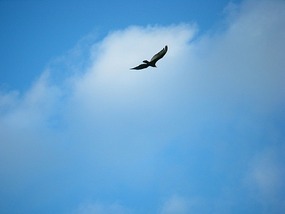
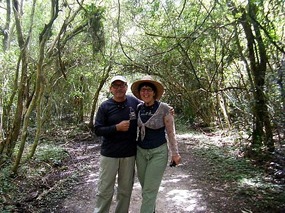
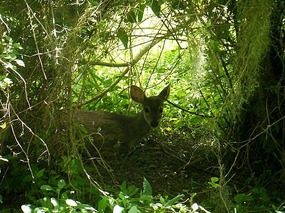
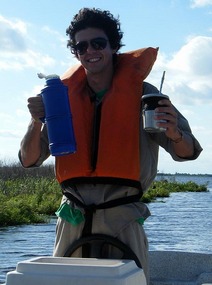




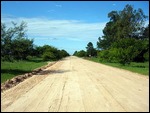


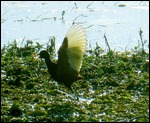
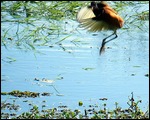
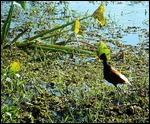

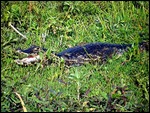
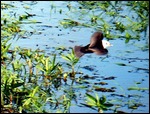
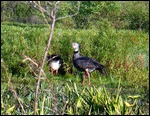
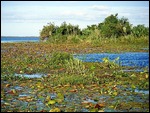
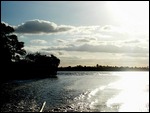

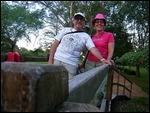
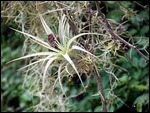
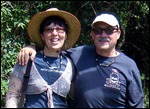

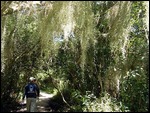
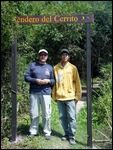
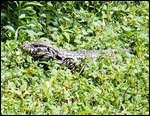
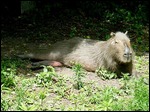
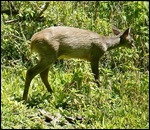
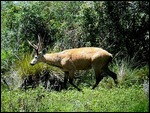
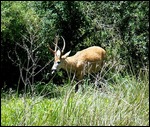
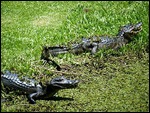
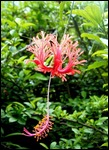
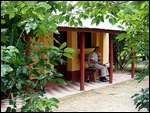
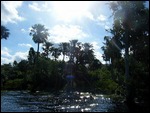
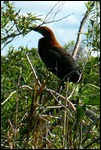
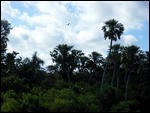
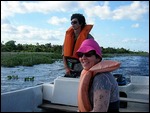
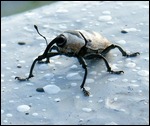

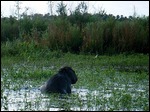
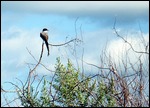
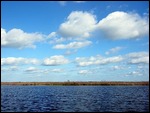

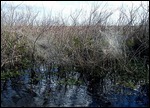
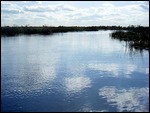

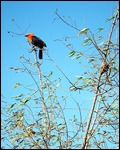
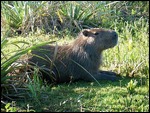
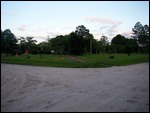
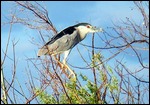
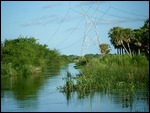
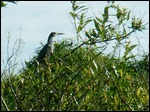

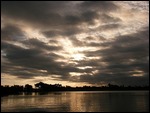

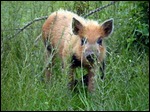
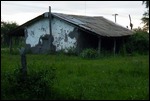
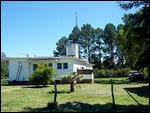
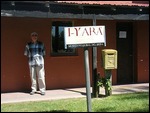
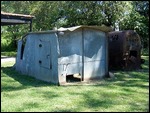
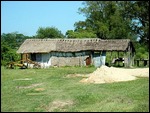

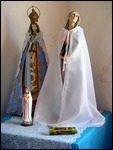
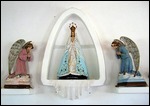
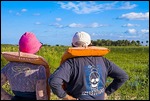
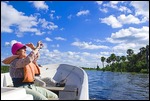
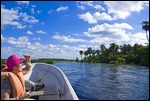
2025-05-22